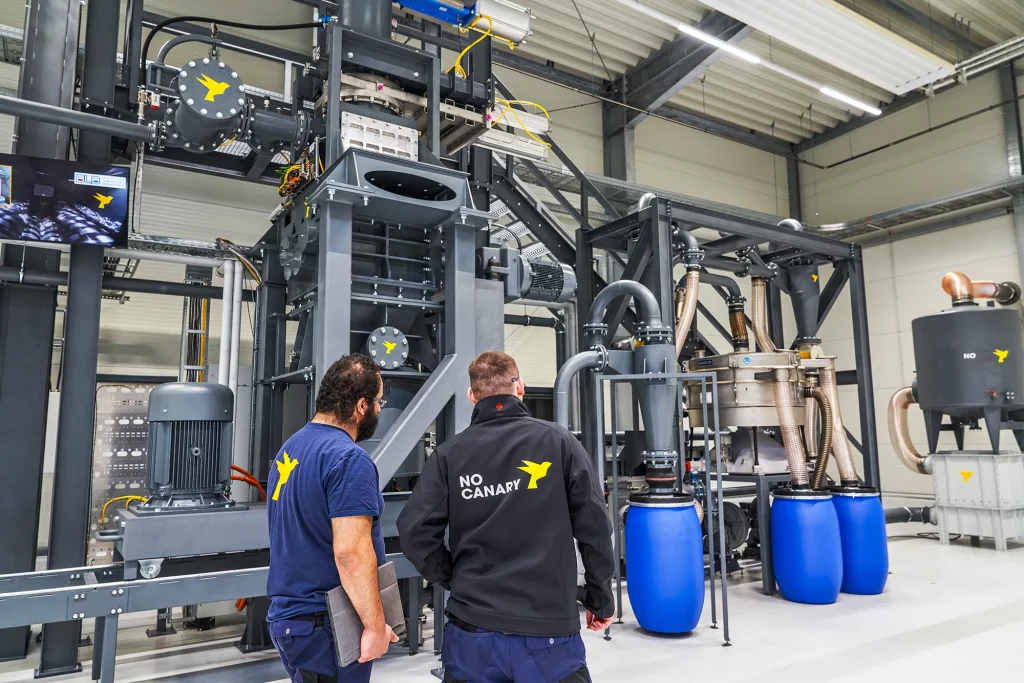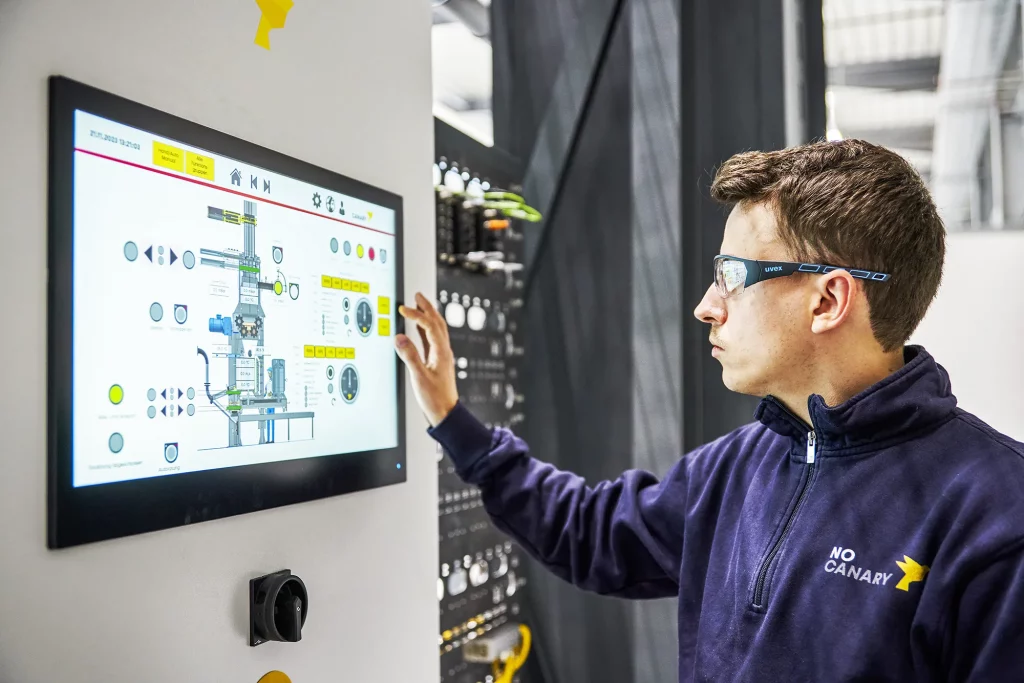R&D Lines for battery recycling

No Canary’s R&D lines are designed as pilot plants for research and development in the field of lithium-ion battery recycling. These compact recycling plants enable research institutions, universities, and corporate R&D departments to test sustainable recycling processes on a small scale and then successfully transfer them to industrial scale. With their modular design and realistic representation of all important process steps, the R&D Lines form an important bridge between the laboratory and industrial application – they create a protected space in which new processes can be developed and optimized under practical conditions before being used in large-scale plants.
All central process steps of battery recycling are represented in the technical core of the R&D pilot plant. The deactivated lithium-ion batteries are first shredded in a vacuum chamber at a pressure of up to 5 mbar. This vacuum shredding not only ensures safe, controlled shredding without the risk of explosion, but also facilitates the subsequent steps, as the extreme vacuum already removes a large proportion of the volatile ingredients. Immediately after the shredder, the shredded material undergoes an intensive drying process that extracts any remaining moisture and electrolyte from the battery residues. The organic solvents in the electrolyte that evaporate during this process – i.e., the VOCs (volatile organic compounds) – are collected and condensed in a special condensation system. In this way, the plant recovers the volatile electrolyte components instead of allowing them to escape uncontrolled into the environment. This combination of vacuum comminution, intensive drying, and VOC condensation ensures that the end result is dry, largely degassed comminuted material (black mass and other fractions) that is optimally suited for further processing.
„Vacuum comminution and intensive drying safely convert battery residues into dry, degassed material – efficiently and with low emissions.“
Full control, maximum transparency, secure scalability
High data transparency and control are also hallmarks of the R&D Line. All relevant process parameters are seamlessly recorded and logged, enabling detailed analysis of each test in real time and retrospectively. Standardized interfaces such as OPC-UA allow live data to be read from the system and integrated into higher-level control systems. Integrated data logging stores all measured values and settings during operation, so that test series can be precisely documented and reproduced. In addition, video surveillance provides insight into critical process zones—such as the grinding chamber—and allows the process to be visually monitored. This transparency, in con with comprehensive sensor technology, gives experts the opportunity to precisely understand, optimize, and scientifically evaluate the process steps.
The systems can be flexibly adapted to different requirements for precise test runs. For example, the R&D Lines have screens in the grinding module that can be exchanged depending on the test in order to set the desired particle size of the starting material. The mechanical components, such as comminutors or separation units, operate at variable speeds, allowing the intensity of comminution and conveying to be precisely controlled – from gentle material handling to intensive comminution, everything can be adjusted as required. In addition, the heating and cooling processes within the system can be finely regulated. For example, drying temperatures or cooling capacities can be adapted to specific test requirements in order to run through different scenarios. This variety of control variables makes it possible to carry out each test under precisely defined conditions and thus achieve reliable, scalable results.
Safety and environmental protection are top priorities at the R&D Line. The entire plant is gas- and dust-tight, so that neither hazardous dusts (such as fine metal oxides such as nickel or cobalt oxides from black mass) nor solvent vapors enter the working environment. All process steps take place in closed systems, which minimizes the risk to personnel and protects the environment from contamination. In addition, the plant is equipped with activated carbon filter technology for exhaust gas treatment. Any residual emissions of volatile organic compounds from the process are thus effectively removed from the exhaust air. As a result, the R&D pilot plant meets the highest safety standards and environmental requirements.
A key advantage of the No Canary R&D Lines is their scalability. All processes and parameters tested in the pilot plant can be seamlessly transferred from the laboratory to industrial scale. The plant has been designed so that the knowledge gained and process optimizations can be directly transferred to large throughput rates – up to 2000 kg per hour in fully industrial recycling plants. The R&D Lines thus serve as a link between development and large-scale production: companies and research partners can first validate and optimize new recycling processes on a small scale before transferring them to industrial production with a high degree of reliability and low risk. In this way, No Canary is helping to shorten innovation cycles in battery recycling and bring sustainable technologies to market faster without compromising safety or efficiency.
